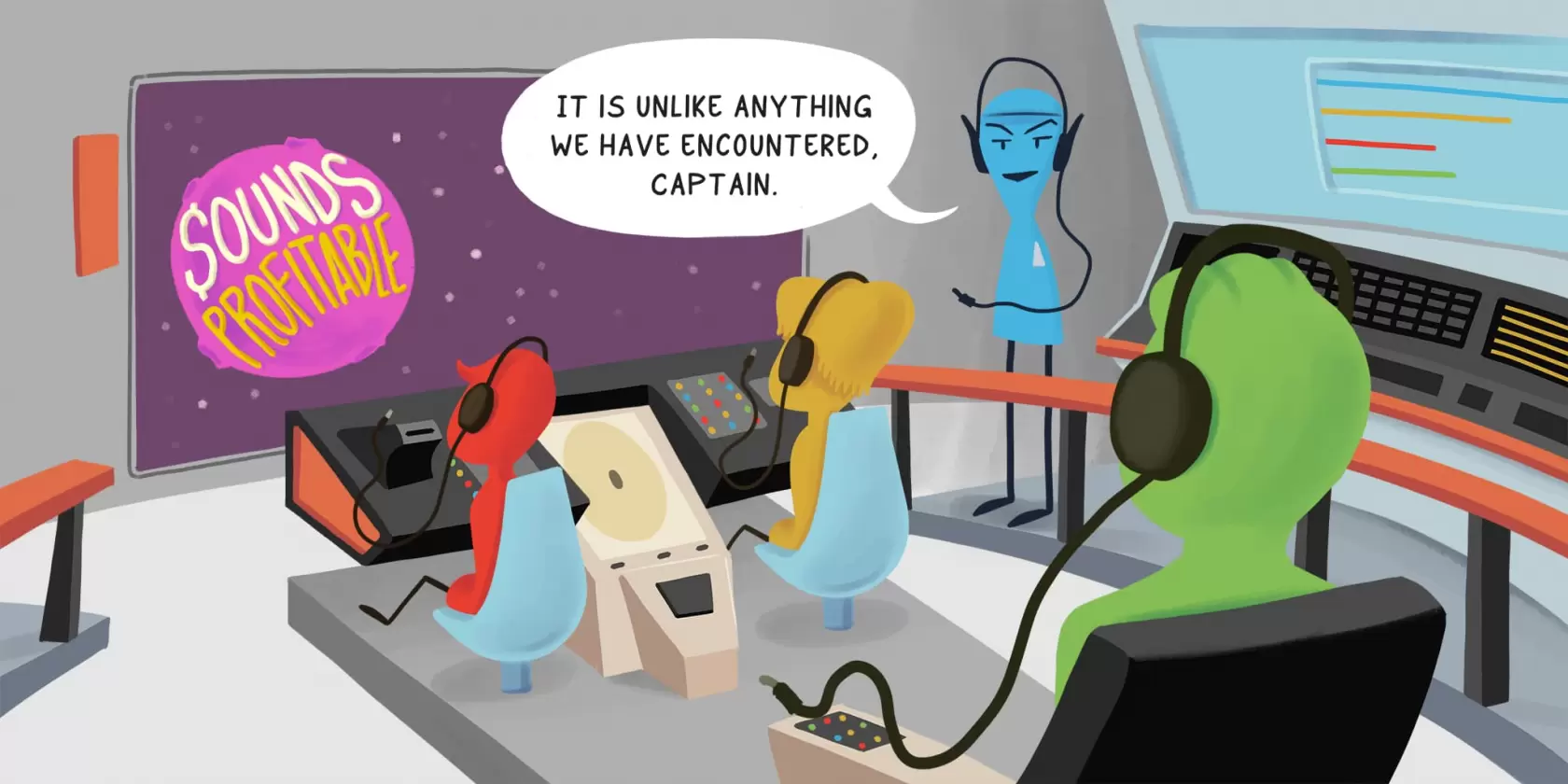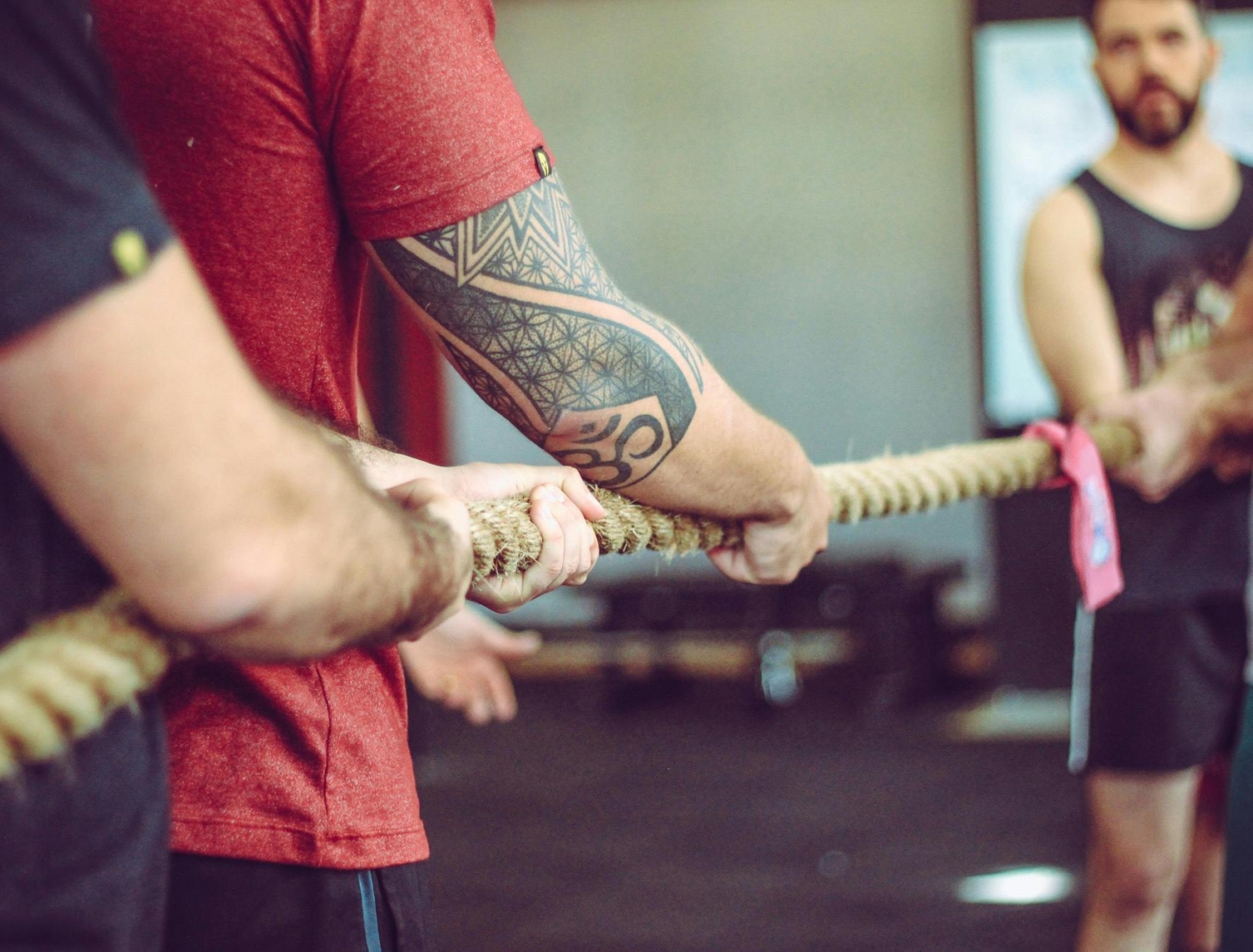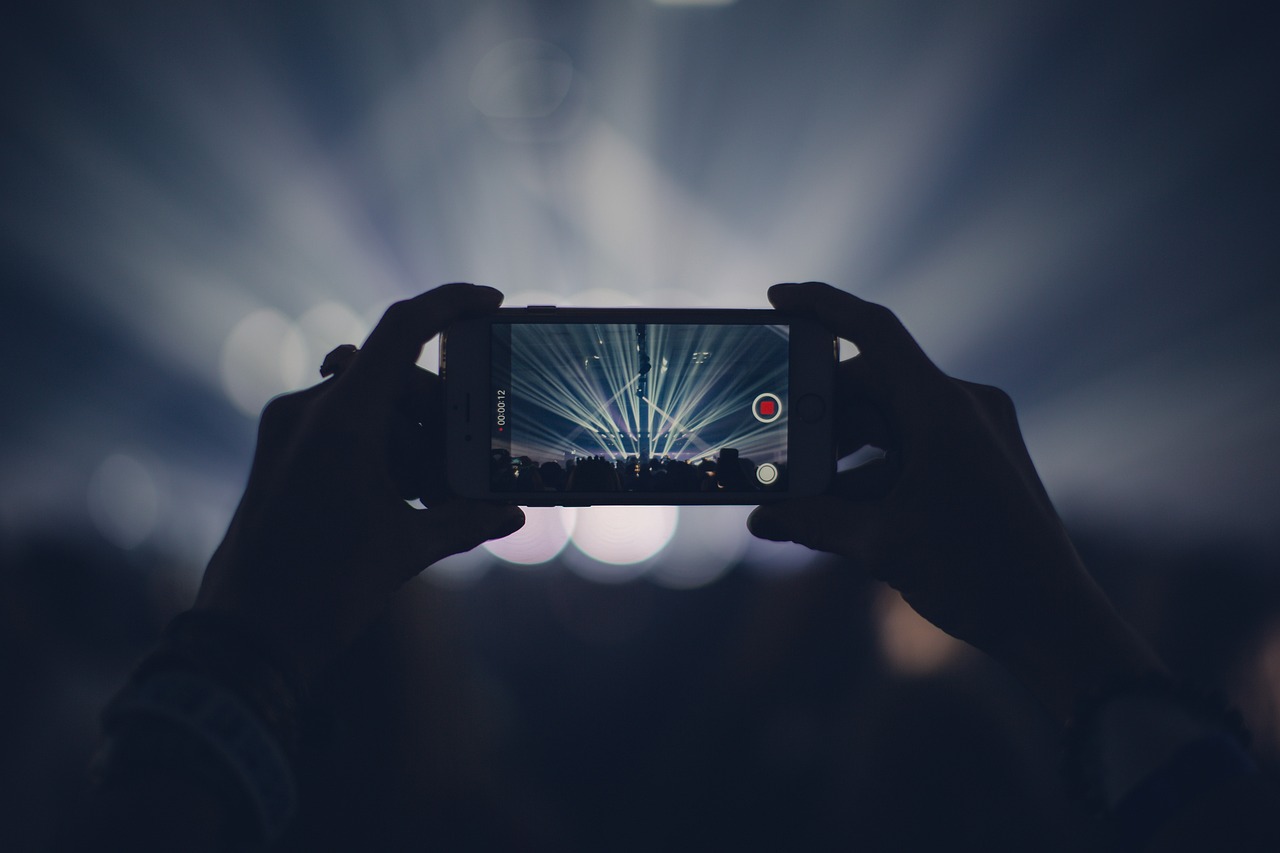Podcast discoverability is one of those problems that seems to plague podcasting but actually only plagues individual podcasters. A subtle difference, but an important one. In this episode of #GoodData, we’ll dig into the data of what tactics are showing results.
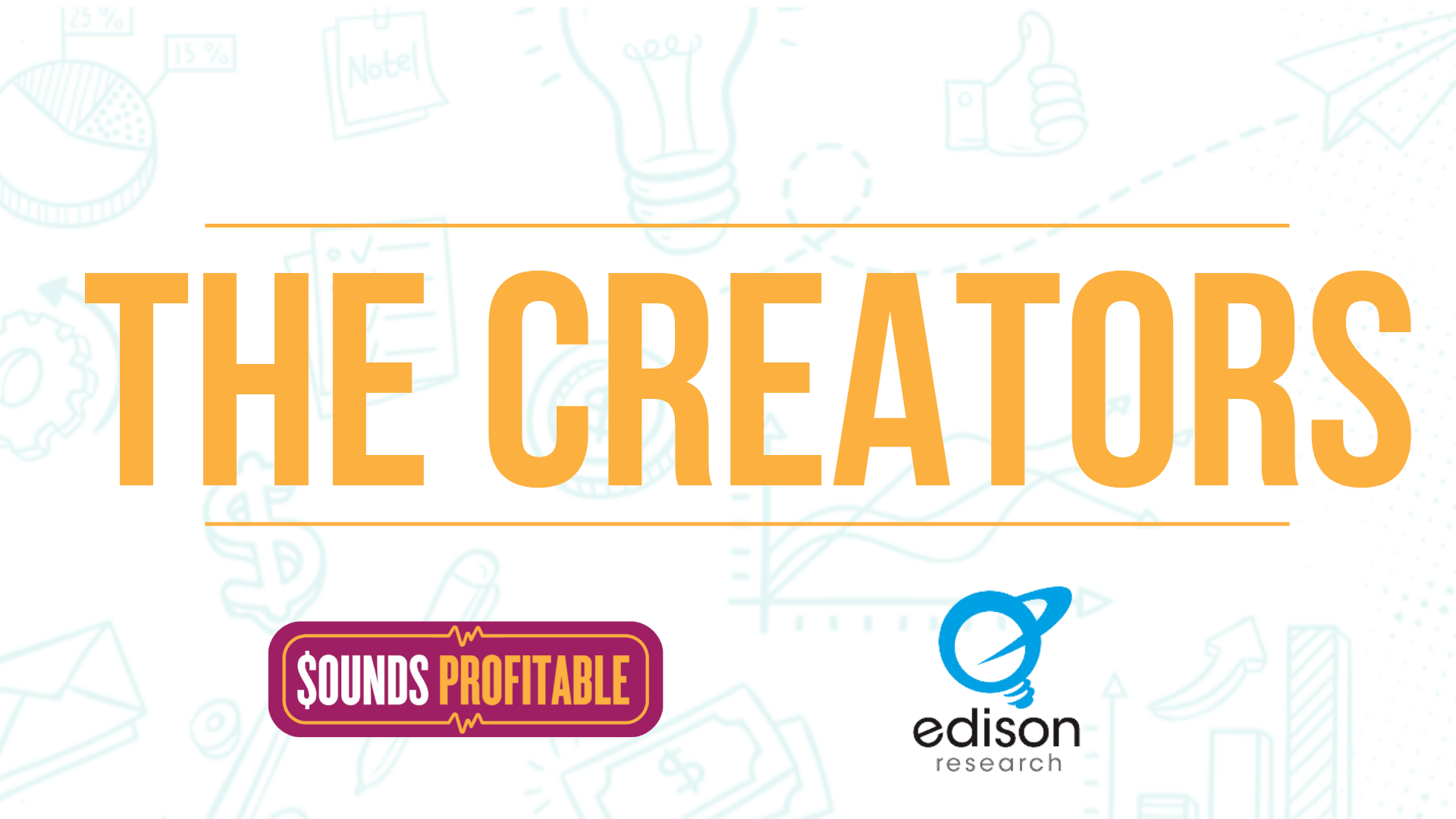
Sounds Profitable, in partnership with Edison Research, has put together the first credible study of the profile of podcast creators in America. Watch live on June 28 @ 1:00p ET.
Caila writes…
Welcome back to #GoodData͏📊, where we decipher podcast industry data stories into actionable insights.
The ideal venue for your next panic attack? The cereal aisle.
The 2008 Best Picture nominee, The Hurt Locker, illustrates just how overwhelming this godforsaken aisle feels. In this clip, our leading man—James, played by Jeremy Renner—takes one long glance at the stacks on stacks on stacks of cereal boxes and feels totally hopeless.
I think about this cereal aisle scene a lot. Whether it’s picking between Cocoa Puffs or Frosted Mini Wheats OR The Daily or Today, Explained; I find myself exhausted by a never-ending stream of decision-making.
Decision fatigue is nothing new. A multitude of reputable internet sources indicates that adults, on average, make 35,000 “remotely conscious decisions each day.” And this data is kind of old, so that estimate doesn’t capture how the rise of streaming services (and their robust content libraries) has impacted the number of decisions we make each day.
The 2019 Nielsen Total Audience Report found that nearly 30% of streaming adults, A18-49, said “they will sometimes stop watching content if they can’t find something appealing.” Drilling down even further, how long do most people spend searching for videos before hitting play?
- A18-34 spend 9.4 minutes on average considering content options
- A35-49 spend 8.4 minutes on average considering content options
This isn’t a new conversation. Consumers have been grappling with the paradox of choice for decades or at least ever since the cable companies gave us 900 channels. And like our video and television forebears, this isn’t a new challenge for the podcast industry either.
The Great Discoverability Debate has been a lively one. Why? Because the success of this media channel hinges on cracking the audience growth code… and fast!
For this issue of #GoodData, we’re tackling what we know and don’t know about podcast discoverability. What’s working? And how can we use the latest data and insights to inform audience growth strategies?
What We Know About Podcast Discoverability
People are overwhelmed by where to start with podcasts. If a would-be or should-be podcast listener makes it far enough to open a listening app, the endless array of options feels a lot like that cereal aisle scene from The Hurt Locker.
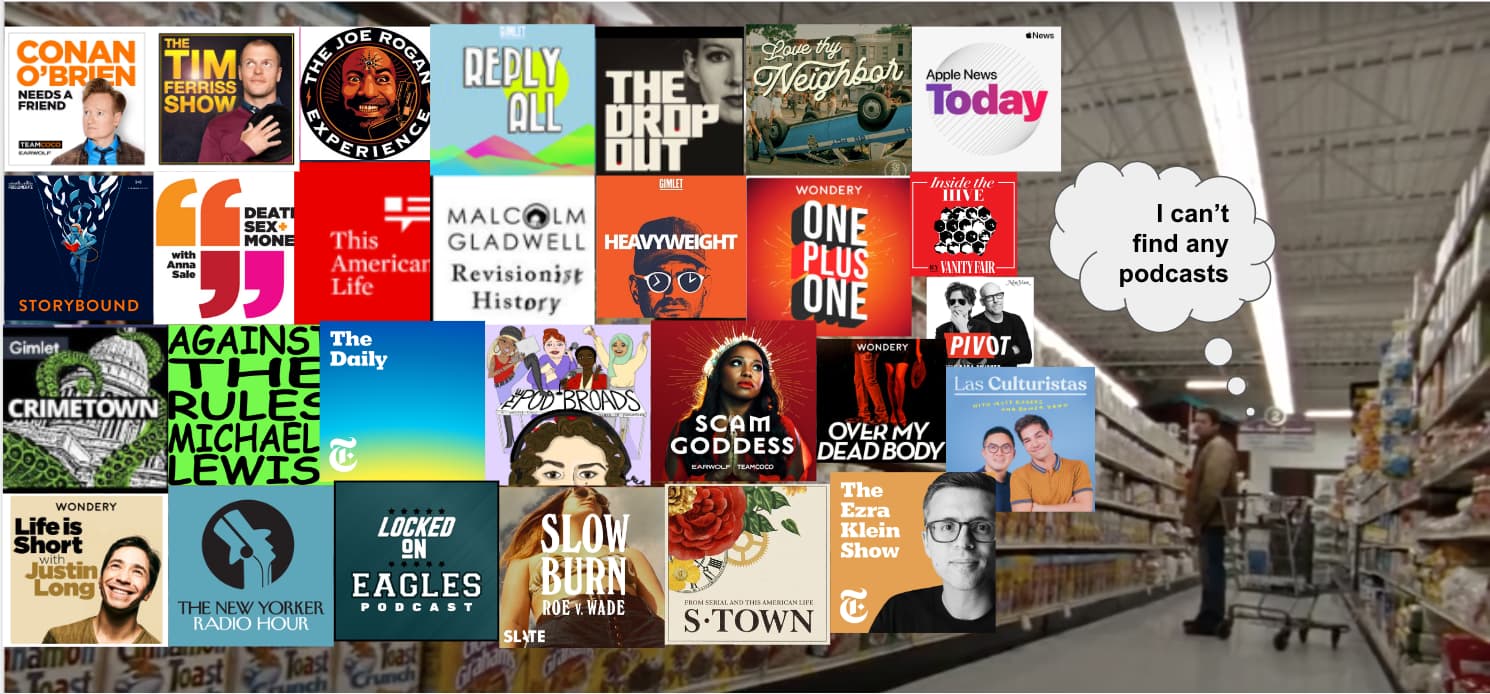
For those tasked with podcast audience growth, we can learn a lot from WHY people freeze up and run away from podcasts. The UK media regulator, Ofcom published The UK Podcast Survey 2022 this past April. All hail Adam Bowie, who took a stab at interpreting the survey’s raw data in this blog post.
The survey asked the UK sample size: “Why did you stop listening to podcasts?” These responses capture the barriers to entry for some should-be or would-be podcast listeners:
- 34% said “I can’t find any podcasts that interest me”
- 29% said “I don’t have enough time to listen to podcasts”
- 14% said “I find listening to podcasts inconvenient”
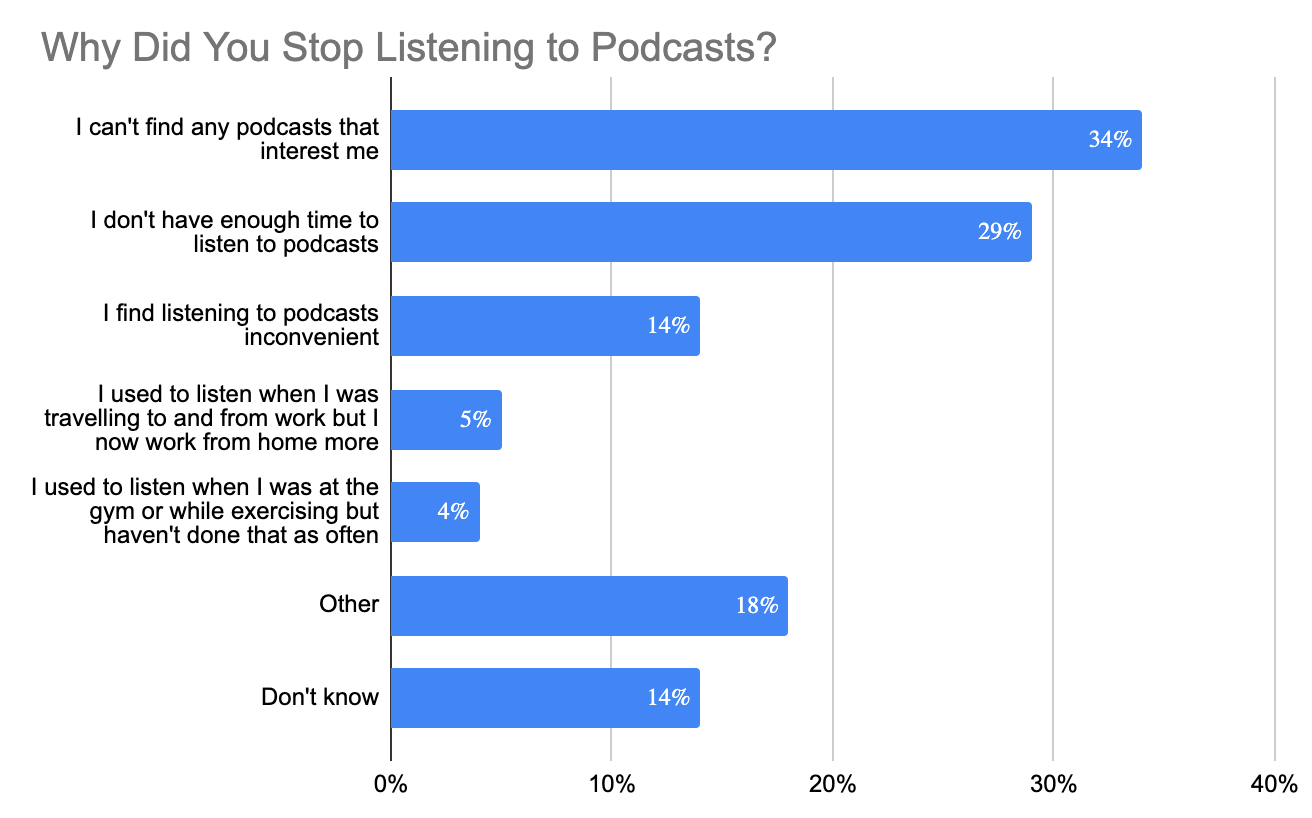
The study also asked, “Why have you never listened to a podcast?” Here were the top responses:
- 51% said| “Not interested in listening to podcasts”
- 20% said “I don’t know how to access podcasts”
- 15% said “I don’t know what podcasts are”
- 15% said “I don’t like listening to speech content”
- 13% said “I don’t have enough time to listen to podcasts”
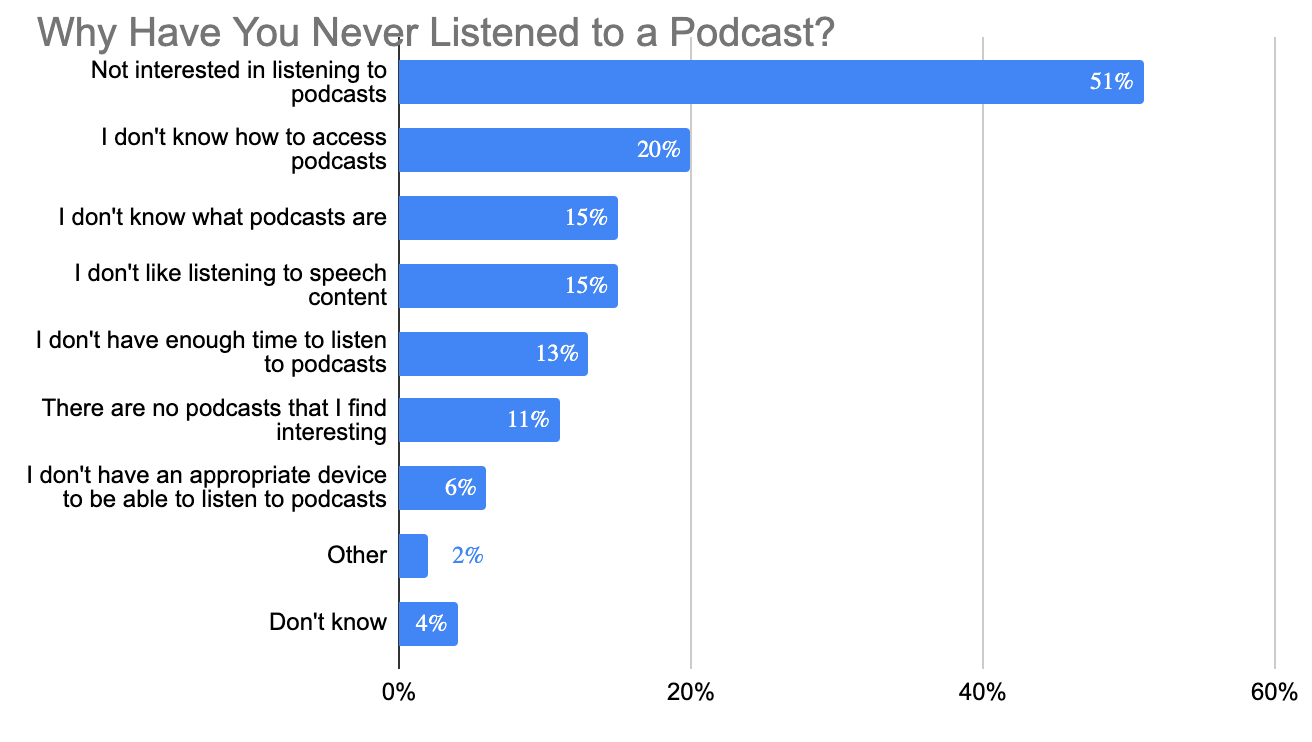
Source: The UK Podcast Survey 2022, Ofcom / Adam Bowie blog (4.21.21).
Before you’re like, “Caila, I thought you were here to give me GOOD data?” Touché. But I promise, this data is good news!
From listening apps that prioritize promotional tactics in their design — so users don’t get overwhelmed by too many options — to developing more targeted marketing messaging that taps into these objections of “inconvenience” or “too little time”; each reason to not listen represents an opportunity for us to do better and create more people-centric discovery experiences.
Enhancing podcast discoverability and making the medium more accessible to more people won’t come from one platform or one publisher filling a hole. A real solution will look like lots of stakeholders working across disciplines to improve entry points for new listeners. #LeagueOfNations #MultilateralApproach
If we can connect the dots between why people run for the hills when they hear “podcast” and the committed listeners, therein lies a path forward.
What’s Working In Podcast Discovery
There are tons of articles, online courses, and webinars led by experts more well-informed than I on the best methods for growing your podcast audience. Here are a few recent articles that offer some succinct advice:
- Buzzsprout: Podcast Marketing: 100 podcasters share tactics they used to grow their shows
- Riverside.fm: 20 Proven Strategies for Podcast Promotion
- Advertoscope: The 5 Ps of Podcast Marketing
For the purposes of #GoodData, rather than repeating the basics – I want to dig into what the latest studies are telling us about “what’s working” in podcast audience acquisition.
Podcast Distribution on YouTube Is Working
It’s old news for folks steeped in the audio biz but it bears repeating: video distribution may be the future of podcast audience growth.
Last month Cumulus Media and Canada’s Signal Hill Insights released their Spring 2022 Podcast Report. For Cumulus, this was the first time one of their surveys included an option for respondents to indicate whether they “watched” their podcasts. According to the report, “expanding the definition of the podcast audience to those who ‘watch’ rather than just ‘listen’ increased the podcast universe by 10%.” Here’s what measuring podcast watching also revealed:
- 38% of respondents “who prefer podcasts with video” most commonly use YouTube
- 9% of respondents “who prefer podcasts with video” use Spotify (which offers video in select markets)
- 57% of weekly video podcast consumers preferred to watch their video either in the background or directly
- 55.5% of YouTube podcast consumers actually watch the video (rather than only listen)
What’s interesting about this study is that Podcast Newcomers, defined as individuals who started listening to podcasts within the past year, are the most likely to “watch” their podcasts.
- 27% of podcast newcomers prefer YouTube for consumption
- 6 in 10 podcast consumers now say they prefer podcasts with video
What else do we know about the growing number of people who come to YouTube for podcasts? You can see in the graph below that YouTube podcast consumers are younger, newer to podcasts, and more likely to be non-white.
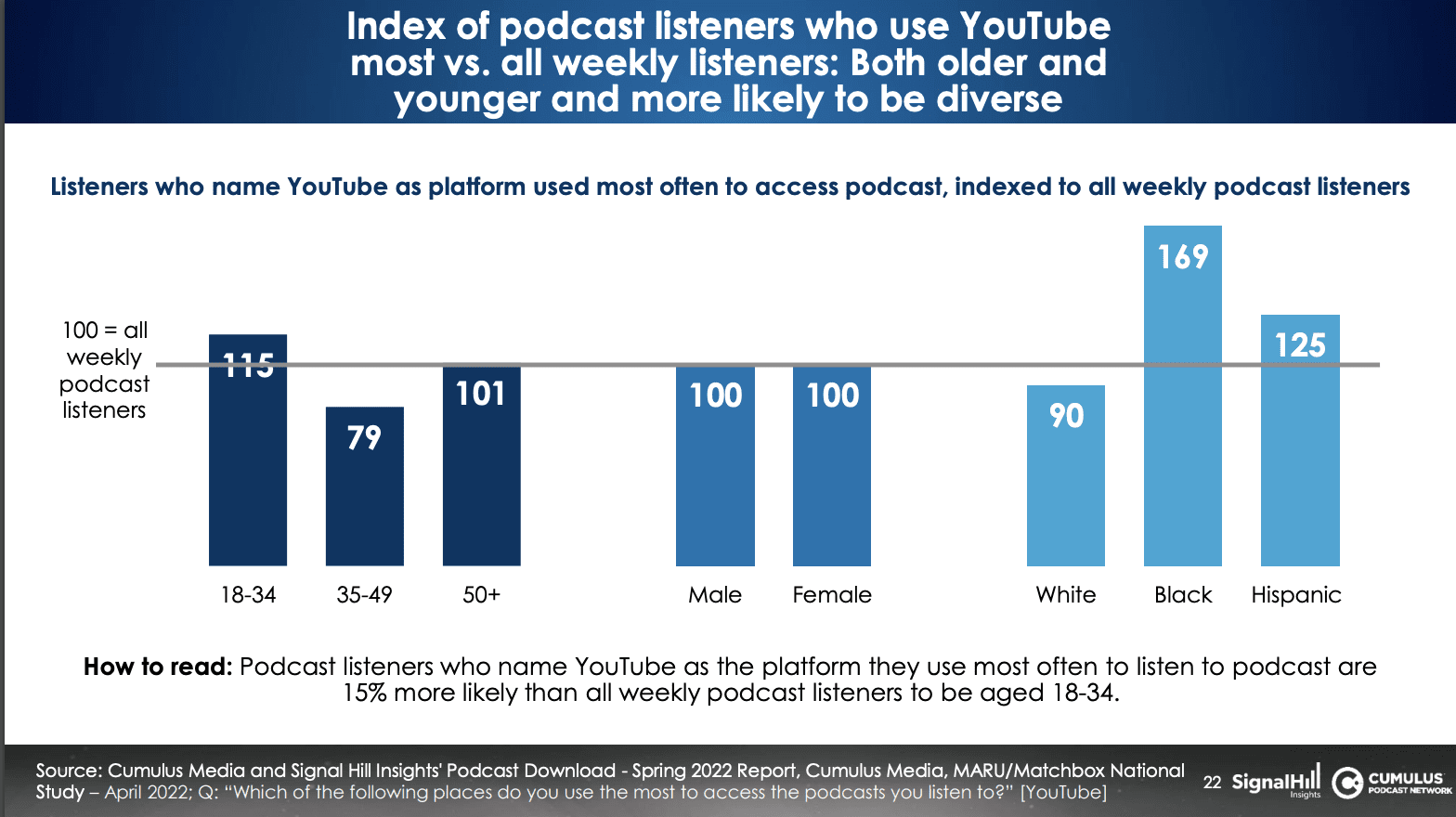
Edison Research has also been tracking YouTube’s rise as the platform du jour for podcast listeners for several years. Last year, Tom Webster (now of Sounds Profitable – woo-hoo!) presented on the growth of YouTube at Podcast Movement. When survey participants were asked “where they go to try and find a podcast they have heard about” nearly 50% of respondents said they searched YouTube.
Tom describes YouTube as “a universal content search engine.” If people on the internet are naturally conditioned to search for all kinds of content on YouTube, then distributing your podcast on this platform makes it more likely to be discovered by new listeners.
Combining Video with Social Ads Is Working
Is there concrete evidence that advertising your podcast on traditional channels leads to growth? NuVoodoo’s Q1 Digital Media Study seems to think so.
According to the study’s findings, more than 30% of weekly podcast listeners also consume ad-supported television. This could mean that digital video marketing is a pretty compelling strategy for creating brand awareness around new and existing podcasts.
The study also argues that social media is nearly as potent as word-of-mouth referrals for podcast discovery across generations. Nearly six in ten Millennials rely on friends or social media posts for podcast recommendations. “Social media advertising could be like injecting steroids into the organic podcast discovery process since, unlike friend recommendations, paid messages can be delivered with a lot of frequency”, says NuVoodoo’s Executive VP of Marketing, Mike O’Connor. Here are some of those findings:
- 65% of weekly podcast listeners visit Facebook daily
- 65% of weekly podcast listeners visit Instagram daily
- 50% of weekly podcast listeners visit TikTok daily
- 51% of weekly podcast listeners visit Twitter daily
Overall, this study suggests that a sustained investment by publishers to promote podcast programming—either on social media or across video—could unlock a massive, captive audience.
In theory, I agree with this approach. But as we learned from the objections to listening to podcasts, the efficacy of these paid campaigns will rely on strategic messaging and easy-to-remember CTAs. Also, publishers will need to normalize spending on paid marketing for podcasts.
The Takeaway
To solve the real pickle of enhancing podcast discoverability, based on the data, the industry should consider the following approaches:
- Working together to enhance podcast search capabilities across platforms
- Seriously commit to distributing video versions of audio-first podcasts, given current consumer behavior,
- Normalize paid podcast promotion. A sustained paid marketing investment in show promotion could be a huge boon for the medium.
Podcast discovery is a heated topic in our industry because the people in this industry care a lot about the channel’s future staying power. There are independent podcasters and dedicated marketing teams out there doing essential work to drive audio discovery. My hope is that by exploring what the latest data and insights have to say we can be more purposeful in testing out new, more effective methods of distribution and promotion.
New Sponsors
Sounds Profitable exists thanks to the continued support of our amazing sponsors. Each sponsor receives one hour of consulting per month as a way to say thanks.
- Adalyst Mediaoffers a growing network of podcasts with all-female audiences to advertisers and listeners alike.
- Founded in 2018, Blue Wire is the home of the next generation of sports media programming through its slate of more than 260 popular national and regional shows such as Green Light with Chris Long, Spinsters with Haley O’Shaughnessy and Jordan Ligons, Stay Hot with TikTok megastars Matt Sponhour, Blaiden Kirk, and Theo Ash and the award-winning American Prodigy series.
Market Insights with Magellan AI
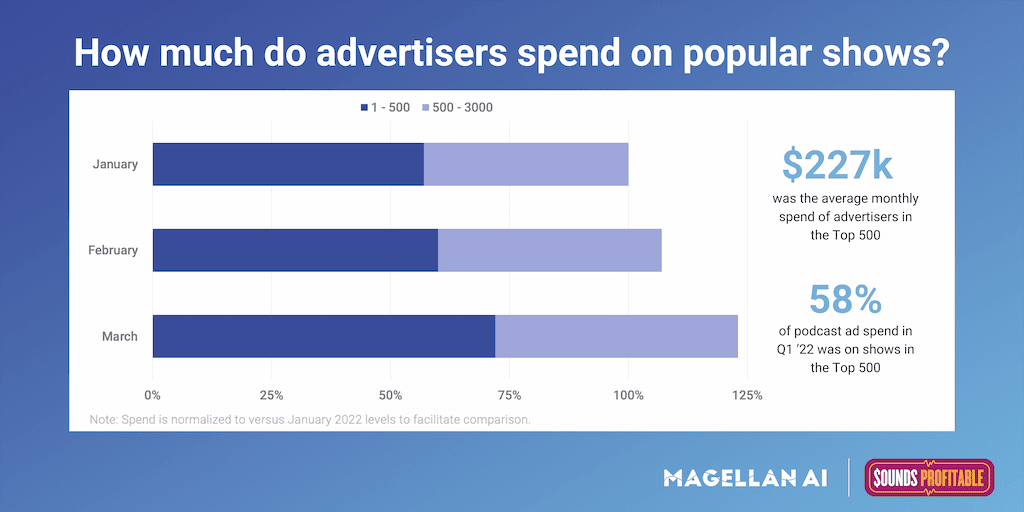
This week we looked into the differences in spending for advertisers that ran on shows that ranked in the Top 500 compared to shows ranked outside of the Top 500 in Q1′ 22. We learned that across all advertisers, 58% of overall market spend was allocated to shows that ranked in the Top 500. Moreover we found that on average, advertisers that ran on shows in the Top 500 spent over 7x the amount that advertisers did who ran on shows outside the Top 500.
We found this analysis interesting for two reasons. Firstly it shows that higher ranking shows continue to be where most dollars are allocated in the podcast space. But it also shows that despite the lower budgets for advertisers spending on shows outside of the Top 500, 42% of all spending on podcasts is still allocated to those higher ranking shows.
Interested in more insights like this? Download the Q1’22 Podcast Advertising Benchmark Report for a full analysis.
Anatomy of an Ad with ThoughtLeaders

Sponsoring brand: Magic Spoon
Where we caught the ad: Serial Napper
Who else has sponsored this podcast? Athletic Greens, QuickStart, Beautytap,
Where else has this brand appeared? Mind Pump: Raw Fitness, Reading Glasses, Dr. Gameshow, The Daily Dad
Why it works: Even True Crime fanatics love cereal – especially cereal that’s healthier for you (and still tastes good). Just as the murder mystery was getting juicy, the podcast host stopped to share the sponsor of the episode – right when listeners are at their most engaged state. Let’s just say, True Crime can really open your appetite for a snack and if the name of the podcast (Serial) doesn’t get you in the mood for cereal, the detailed yet enjoyable ad will.
Check out all the in-depth Anatomy of an Ad from ThoughtLeaders!

